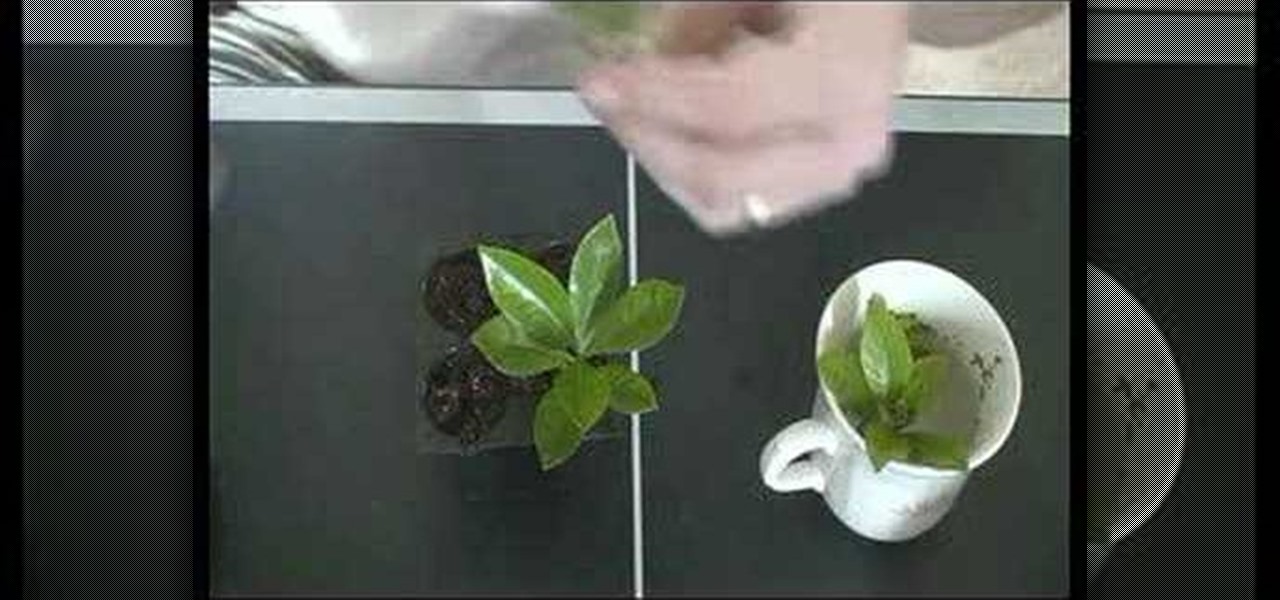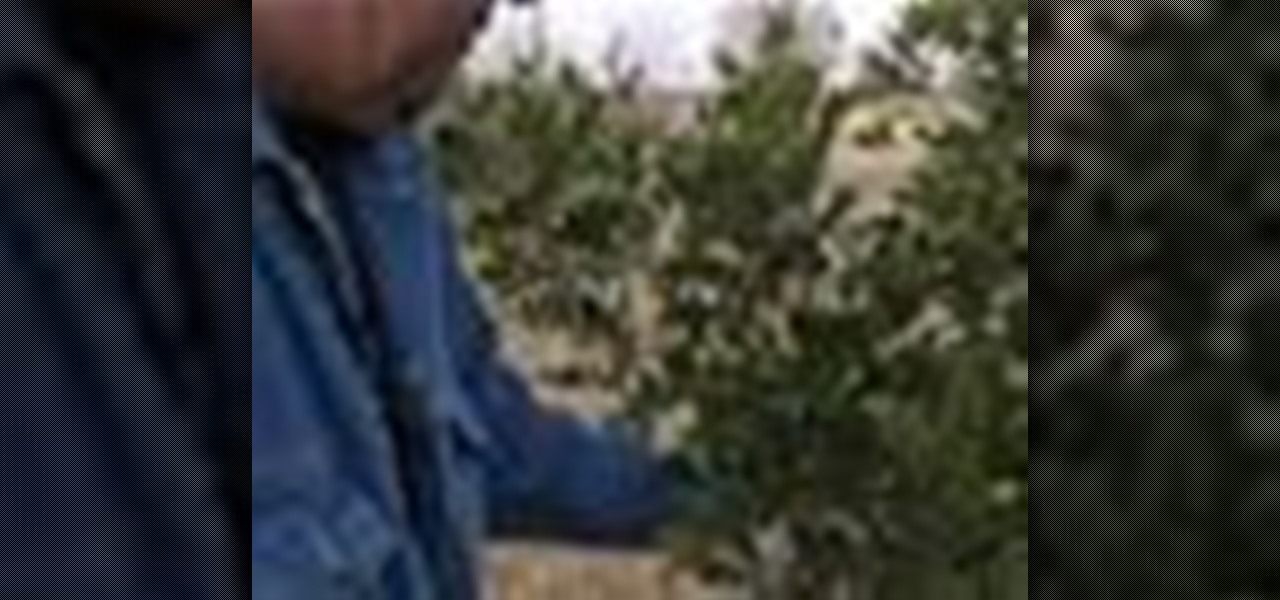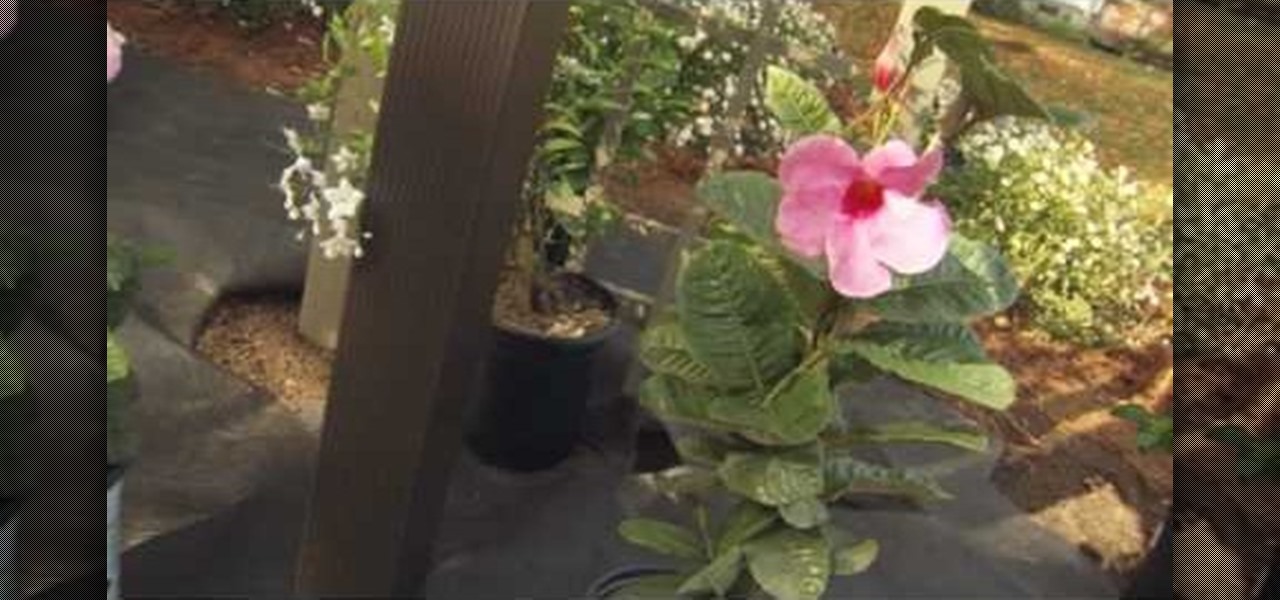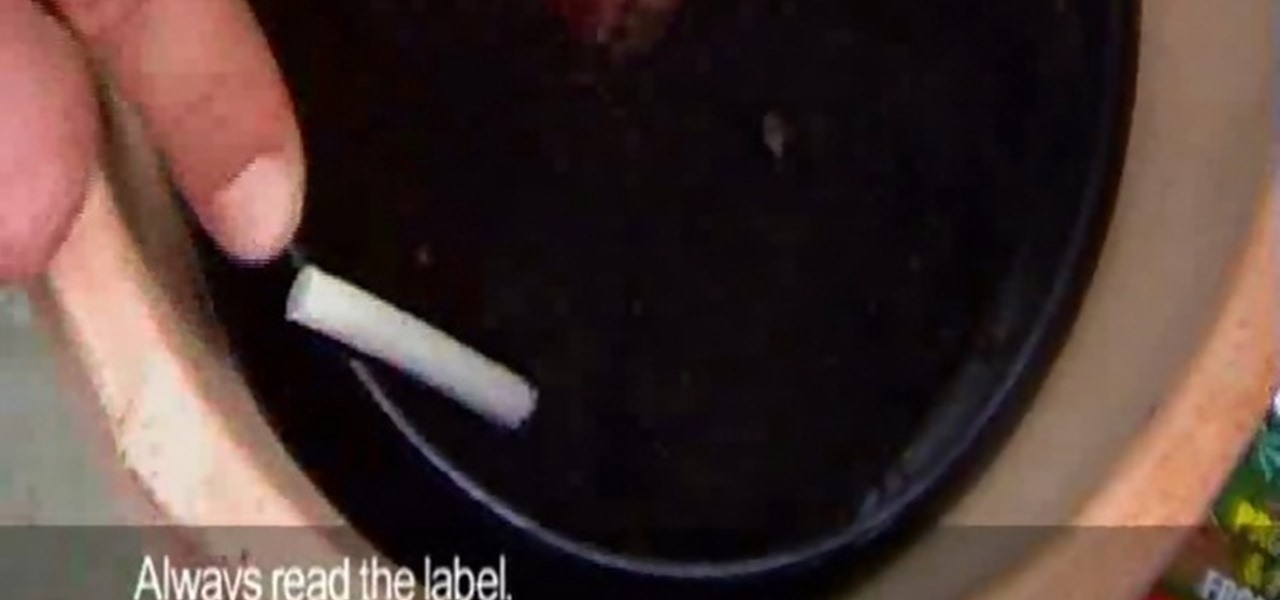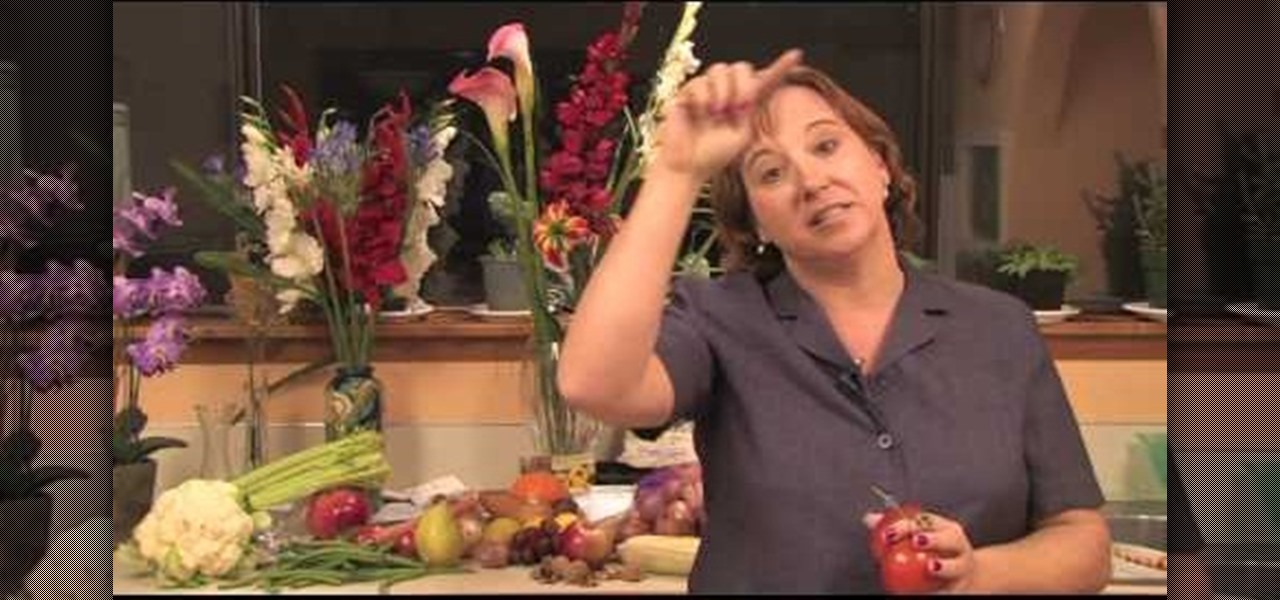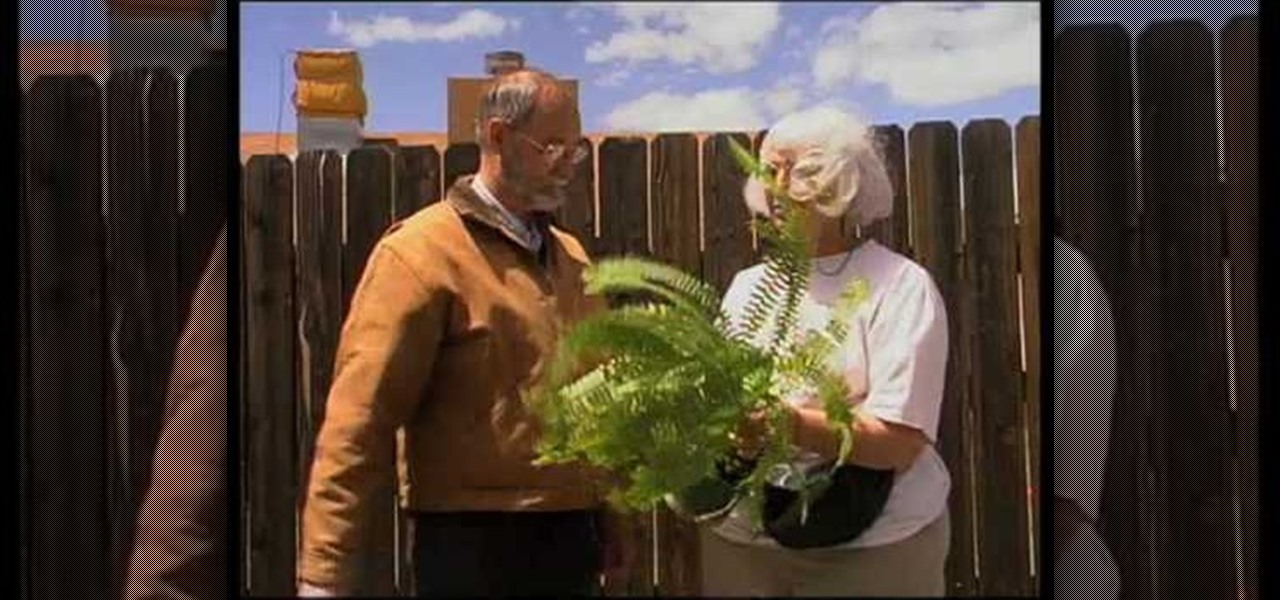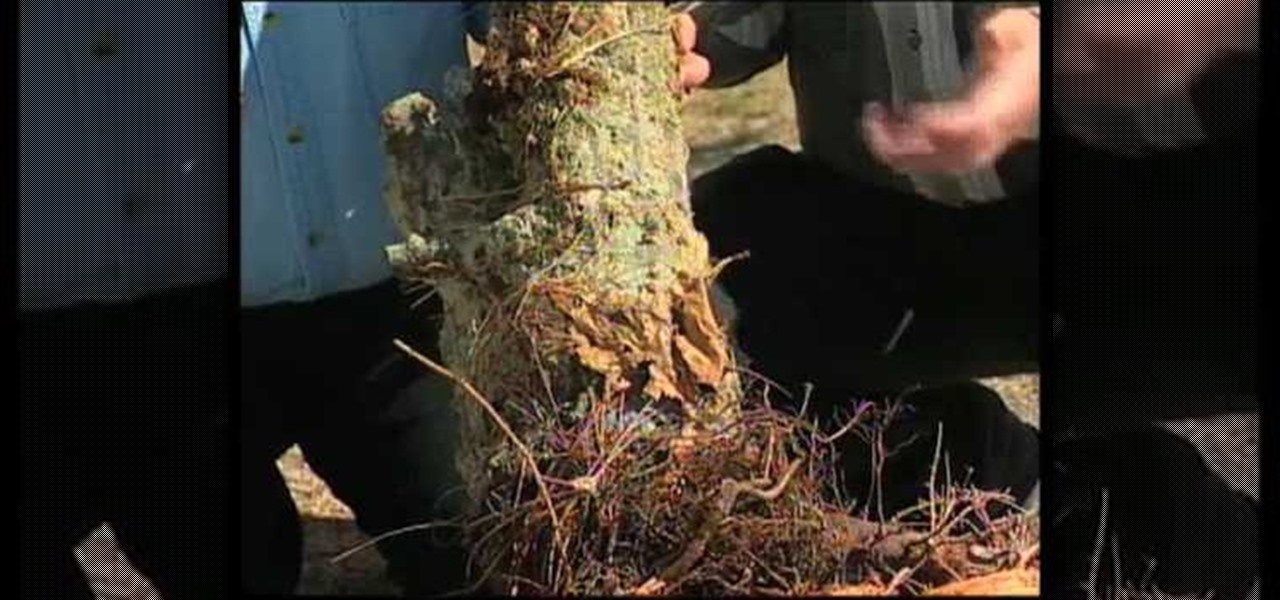
First of all you have to check the root which has started circling. Then notice that there is a dark portion at the bottom of the trunk. You can prevent this problem by avoiding to plant too deeply and not to leave in the pot for too long. You have to plant it at the right depth. Now check the roots of the bigger tree that has died. You shall notice that the roots have started circling around a part and then they stop the circulation to the top of the tree and then the tree dies because it wa...

This is a great way to learn how to upgrade your small house plants into bigger ones. Start over plants once a year. Put rocks on the bottom for drainage. Bugs help your plants to grow. Do not use Pesticides on your house plants. Water weekly. Compost bins make great soil. Sweet potatoes that have roots growing off of them put in a glass of water and wait for them to grow roots. Give you plants at least six hours of sunlight daily. They also like when you talk to them and touch them you can c...

How to divide and re-pot onions and herbs

Every one knows what ivy is, but most think of it as the poisonous ivy that gives a horrible itchy rash, but poison ivy isn't the only kind out there. There's beautiful ivy that can make your home more elegant than ever. Growing the prolific ivy plant will convince you that you have a green thumb while adding fresh beauty around your house, indoors and outdoors.

In this informative video tutorial, you'll be finding out about the herbaceous pernnials also known as hostas. These plants are great for either very sunny or shady areas. They come in many different sizes and shapes and are very easy to grow. So check out this tutorial, to find out more about the plants and how to spread them around your yard for planting. Good luck and enjoy!

Interested in planting potatoes? Start a self-sustaining garden full of veggies you can take from your garden, straight to your dinner plate. Plant potatoes 8 inches apart and about 4 inches deep. When the plants grow about 6 to 8 inches tall, start to hill up the sides. Learn more about how to plant potatoes yourself from this video presented by Homestead Acres.

Whether you lack the space in your home garden or simply want to exercise greater control over your plant's interactions with the surrounding environment, container gardening is a great way to go. And it's also easy to do. With this home gardening how-to from Growing Wisdom, you'll learn how to plant and grow garlic in your own container box.

An associate from Garden Years discusses the danger frost poses to small, outdoor plants. Since you don't have a lot of control over the weather, there are a few tips you can follow to try an avoid any unwanted damage to existing plants. The host examines a peach tree to identify when a plant is blooming and thus very delicate. If a plant is fully blooming, then any temperature below freezing (32 f) can damage the blossoms. Aside from putting cloth over the plant, mulch is also very helpful i...

We all learn a simple description of photosynthesis in grade school but there are a lot more complicated process going on. Plants can utilize carbon at night and this description will explain a very advanced understanding of how CAM works.

Do plants wilt at the sight of you? With these tips, anyone can keep a houseplant alive, even you! You Will Need

Learn how to choose an indoor plant. You don’t need a green thumb to have houseplants that flourish; you just need to know which ones will thrive in your home.

In this video gardening tutorial, you'll find step-by-step instructions for cloning any plant from a clipping (or "cutting"). Plant propagation is very simple and can save you a lot of money in the long run. To learn more about the cloning process, watch this cloning how-to. (NB: Do NOT, as the video suggests, put freshly cloned plants in direct sunlight while in a hot house or you will have steamed plants!)

How to grow mountain laurel plants; get professional tips and advice from an expert on caring for plants and flowers in this free gardening video series.

Bougainvillea plants make an excellent addition to any garden because of their colorful flowers. Learn how to care for bougainvilleas with tips from a gardener in this free plant care video series.

House plants deserve TLC just like your garden plants - so don't forget about them! This video gives some tips on keeping your indoor plants healthy.

Plants dominate the living landscape around us. Learning about this essential part of ecosystems by collecting and identifying plants should be a part of any life sciences curriculum. Designed to support the Plant Press project at Hila Science Camp, this video discusses collecting and classifying plants and the importance of the classification system developed by Carl Linnaeus.

Mailboxes don't have to look all lonesome, with only the curb to cheer them up. If you have one of those street boxes on a post instead of a house box, the best thing to do to make a happy mailbox is to give it some company. To improve your home's curbside appeal, take your landscaping efforts to the curb and enhance the area around the mailbox. It's a great way to accentuate your landscape.

Curtis Smith, Extension Horticulturist with Southwest Yard and Garden, and Rick Daniell, Bernalillo County Horticultural Agent, discuss how to identify problems with vegetable plants in your garden. Gray or white spots on a squash leaf are natural if they do not rub off. Blossom end rot can afflict tomatoes, squash, chilies and melons. Blossom end rot indicates a calcium deficiency during times of vigorous growing during uneven watering. Fertilize when the plants are young. Sun scald can affl...

Every home gardener has tackled tomatoes, but what about upside-down tomatoes? What?!? That's right, you can actually grow tomatoes upside down, suspended in the air. It keeps the plant off the ground and you don't have to worry about staking it.

Pruning is a very important part of gardening that makes sure plants get nutrition, stay away from disease, and promotes continuous growth.

If you're looking for a fruit plant that will provide you and others with a great tasting fruit that is very nutritious, try the blueberry. Planting a blueberry ush in your yard is a pretty easy task to do and is something that you and others will enjoy.

If you think that it's difficult to grow beautiful plants inside your home, you'll be happy to know that you are wrong. Growing plants inside a home can be an easy task and requires some hard work, but it pays off in the end. So check out this tutorial on how to look after and grow plants inside your home today. Enjoy!

Are you an amateur gardener, and looking forward to the next thing to plant? Why not plant potatoes? They're hardy, delicious, and don't require too much care. Watch this video to learn how to plant and grow potatoes in a container. At the end of it, you'll always have a great harvest and side dishes for dinner!

This is how to plant and grow basil. First pick out a pot with a drain hole. Put some crushed cans in it. Fill it with dirt. The dirt should be part potting soil, part compost, and part normal dirt. Take off the peat moss pot the plant is in, break up the roots, and set your basil in the pot. Then put your dirt all around the plant, making sure it has good drainage, then pack it. Don't forget to put in your sign so you know what plant it is later. Then put a mixture of root starter and miracl...

This video demonstrates how to use plastic row covers and wall of water to start plants early. A lot of gardeners want to start their planting early if the weather is nice. But they may be subject to some frost still yet. How can they protect their plants? First is a demonstration of how to use a spun bond polyester like material. It is breathable, rather than using clear plastic, so the plants don't cook on warmer days. Then the video shows how to use a wall of water to start a few plants ea...

Flowering bulbs require some few common tools before planting such as compost or peat moss, work gloves, fertilizer, garden trowel or bulb planter and the garden bulb of your choice. During the spring season you can plant tender bulbs such as, irises, gladiolus and elephant ears. In terms of fall plantings you can plant bulbs such as tulips, daffodils, hyacinths and crocuses which could give a beautiful bloom in the spring. In general the blooms will last till three to four weeks, bulbs such ...

To prepare for planting take a fork and poke it into the ground and loosen up the ground. Do this throughout the beds so that the ground is completely loosened up. After you finish loosening the soil take a shovel and dig to the bottom of the bed and turn the soil over. If there are leaves in the bed go ahead and turn the leaves over into the soil. It will provide extra compost for the soil. Add some rabbit manure to the soil to provide extra nutrients. Turn the manure into the soil so that i...

Don't throw out your wilting plants! There's a chance you can bring it back from the dead. Your wilting plant can be spared and revitalized with a little help & these easy steps.

Growing plants from cuttings is an inexpensive way to expand your garden. With patience and the right technique, it can be done fairly easily.

Pruning tomatoes, though not required, will create stronger vines, which produce larger, fuller tomatoes during the growing season. Trim back a tomato plant in the winter with instructions from a sustainable gardener in this free video on gardening. No need to go crazy, even trimming the plant down by a third will give you a bigger, better tomato. Follow along with the tips in this gardening video and learn how to prune a tomato plant.

How to grow tomato seedlings; get professional tips and advice from an expert on growing your own fruits and vegetables in this free gardening video series.

Knowing how to prepare for a camping trip can be the difference between an enjoyable and safe experience and an experience that no one wants to repeat. Learn how to use plants and animals to survive in nature in this free outdoors video series.

How to get your seeds to sprout so you can plant them. Its common practice to plant 3 seeds an inch apart and see how many sprout. Using this method, you only plant the seeds that sprout. This saves time and eliminates waste.

If working an area with poor or eroded soil something must be done to improve the soil so plants will grow. A great tip is to use about 50% organic matter and 50% native soil, mix it together, put it around the rocks, then plant Thyme or other creeping plants. This will help the plants to establish themselves. Don't put organic matter under the rocks because over time it will allow the rocks to sink.

Elderly woman shows how to prune plants properly. Video covers which plants to prune, when to prune, cleaning prune tools and how to prune the individual plants. Watch video for best results.

Plant gift baskets are a great way to show you care about someone. Learn how to make plant gift baskets with tips from a florist in this free gift basket decorating video series.

This video explains how to solve several problems associated with gardening in arid environments. Rhubarb is a plant that is commonly grown in colder environments. In arid environments, its very important to not over water it, so keep it in a sandy soil with lots of organic compost material. Plants such as the peace lily also need well irrigated soil, so it is important to pot it in an organic potting soil in a location that allows the water to drain away from the pot instead of soaking back ...

In this Home & Garden video tutorial you will learn how to identify pest on the oleander, rosemary, & ivy plants. John White presents this video along with Virginia Owens. Spittle bug on rosemary can be removed with a strong blast of water. You can also add a little bit of soap to it. You also have to be persistent with this. Scale is a kind of insect that forms carnication on Spanish Broom. This can be treated with dormant oil in the summer. Ivy gets burnt when exposed to hot sun. So, you go...

John White and Rosemary Maddox address garden problems concerning heat and sun damage on their plants. Rosemary grows tomatoes that grow healthily, but are dry and cracked at the top. John identifies the problem as an excessive exposure to heat and sunlight, and recommends putting a netting over the plants to filter and moderate the sunlight. Rosemary also has a similar problem with her roses. The leaves on her rose plants become yellow and brown and eventually die off. John calls it "heat sc...

This video illustrate us how to identify problems with the rubber plant and the pomegranate. Here are the following steps:Step 1:First of all look whether both the plant leaves are in right shape that is they are not deformed, in case if it is then look for any bacterial or fungal infection.Step 2: Look whether there is any yellowing of the leaves. If so this may be due to over watering.Step 3: Look for whether there in any latex blocking in the rubber plant, if so then remove it or latex won...













